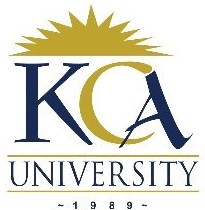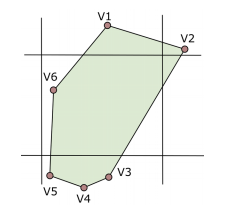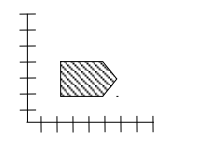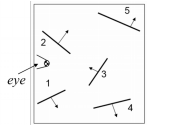
UNIVERSITY EXAMINATIONS: 2017/2018
EXAMINATION FOR THE DEGREES OF BACHELOR OF SCIENCE IN
INFORMATION TECHNOLOGY/ APPLIED COMPUTING
BIT2301A BAC3206: COMPUTER GRAPHICS
FULLTIME/ PART TIME/DISTANCE LEARNING
ORDINARY EXAMINATIONS
DATE: NOVEMBER, 2017 TIME: 2 HOURS
INSTRUCTIONS: Answer Question One & ANY OTHER TWO questions.
QUESTION ONE [30 MARKS]
a) The cathode ray tube (CRT) is the main element of a video monitor. Explain how the CRT
operates (4 Marks)
b) Describe any FOUR primitives that can be used to represent real-world objects. (4 Marks)
c) Explain the following terms as they apply to computer graphics: (6 Marks)
i) Modeling
ii) Rendering
iii) Animation
d) Identify FOUR aspects that determine the appearance of reflectors to the human eye
(4 Marks)
e) Consider a triangle with the vertices (2,7) (3,1) and (6,5). While showing your calculations
clearly, determine the new vertices of this triangle after it has undergone the following
transformations on a 2D plane:
i) A translation of (4,1) (4 Marks)
ii) A scaling of (2,3) (4 Marks)
iii) A rotation of 90 counterclockwise about the origin ᵒ (4 Marks)
QUESTION TWO [20 MARKS]
a) What is the frame buffer and why is it important to computer graphics? (2 Marks)
b) After 3D models are loaded to the geometry pipeline, the following steps take place before
rasterization:
i) Model transformation
ii) Viewing transformation
iii) Hidden surface elimination
iv) Shading
Explain what happens in each of the steps above (8 Marks)
c) Consider the irregular hexagon below that has been clipped using the Sutherland-Hodgeman
algorithm. Illustrate the clipping process and present the clipped hexagon with its new set of
vertices. Show your steps clearly. (10 Marks)

QUESTION THREE [20 MARKS]
a) Describe in detail how computer graphics is applied to the following areas:
i) Medicine (3 Marks)
ii) Computer aided design (3 Marks)
b) Explain THREE approaches to text clipping, and use appropriate illustration to demonstrate
how each approach works (6 Marks)
c) i) Explain the concept of ‘reflection’ in computer graphics (2 Marks)
ii) Illustrate reflections of the object below with respect to X and Y axes, and about the
origin respectively (6 Marks)

QUESTION FOUR [20 MARKS]
a) Explain THREE reasons why a real world object might be invisible from the scene
(6 Marks)
b) Hidden surface procedures can compute output to object precision or image precision.
Explain each of these precisions and cite one advantage of each (4 Marks)
c) Apply the digital differential analyzer to find the intermediate points that can be drawn
between the following sets of points:
i) (2,3) and (8,12) (3 Marks)
ii) (2,2) and (6,4) (3 Marks)
d) Describe TWO types of shear transformations. Use a diagram to also illustrate (4 Marks)
QUESTION FIVE [20 MARKS]
a) Explain how the binary space partitioning (BSP) algorithm works (4 Marks)
b) The image below shows a set of lines (1,2,3,4 and 5) with their surface normal. Given the eye
position, apply the BSP algorithm to partition the space and return an ordered list of polygon
fragments. Show your steps (6 Marks)

c) A illumination model will typically consider FOUR factors. Explain these factors (8 Marks)
d) Write an OpenGL statement to configure flat shading (2 Marks)
